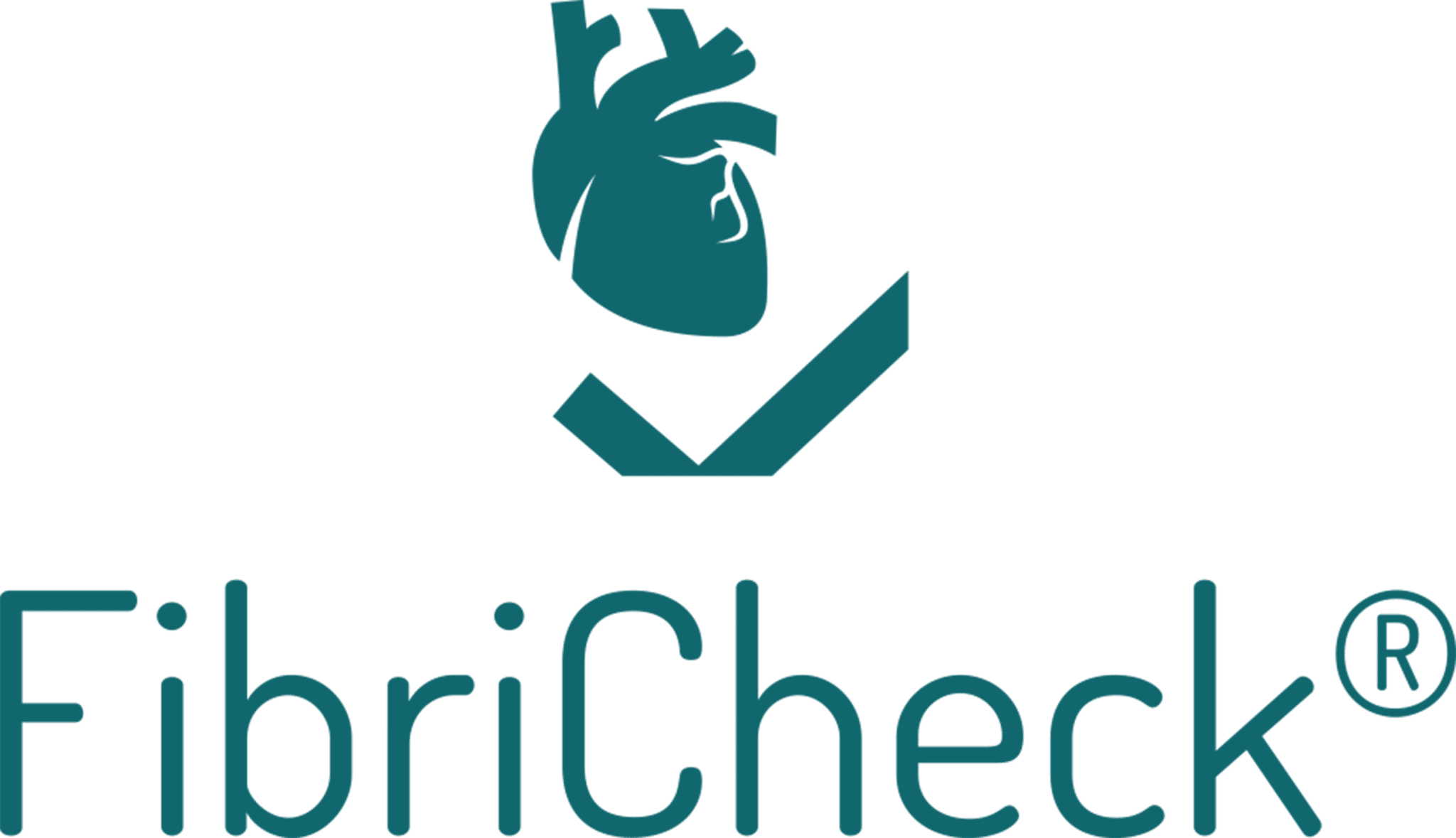Cardiovascular disease is the leading cause of mortality worldwide, placing a significant strain on healthcare systems. The growing amount of people needing care causes workforce shortages, financial constraints, and lengthy hospital waitlists which may put people at risk of complications while waiting for care.
At FibriCheck, we aim at shaping the future of heart healthcare. We do so by finding ways to increase the efficiency of clinical pathways by deploying our innovative PPG-technology used for the detection and monitoring of heart conditions. In this article, we want to share the findings of several of our projects that demonstrate the added value of FibriCheck in reducing healthcare burden.
Decreasing length of stay and enabling early discharge
The virtual wards program at the West Middlesex Hospital and Chelsea & Westminster Hospital (UK) uses digital technology to manage patients with chronic conditions at home. This approach improves accessibility, efficiency, and tailors care to individual needs, while also reducing costs, simplifying processes and enabling early discharge.
In a project involving 73 patients with AF-diagnosis, remote monitoring with FibriCheck reduced hospital stays by 4 days per patient, saving approximately £1,000 per patient. Additional cost-saving was achieved as the virtual ward prevented 88% of hospital readmissions. Patient feedback was positive, with high engagement (93%) and ease of use reported (86%). Patients stated that they felt better cared for on the virtual ward than if they had stayed in the hospital.
Virtual wards also have environmental benefits by reducing the need for patient transportation. Given the growing pressure on the national health system, the NHS is actively promoting the expansion of virtual wards to enhance care outcomes and reduce expenses.
This pathway can be scaled up easily at a relatively low cost, making it widely accessible and applicable across NHS hospital trusts.
Proven cost-saving in post-intervention pathways
The Essex Cardiothoracic Centre (UK) integrated FibriCheck in a digitally enabled pathway to detect AF recurrence after ablation. The use of our technology made it possible to avoid 147 ECGs and 55 seven-day Holters, which translates to an estimated net savings of £19,040 and 73.5 outpatient clinic hours. This project was presented at the Heart Rhythm Society experience and won a global cardiovascular award.
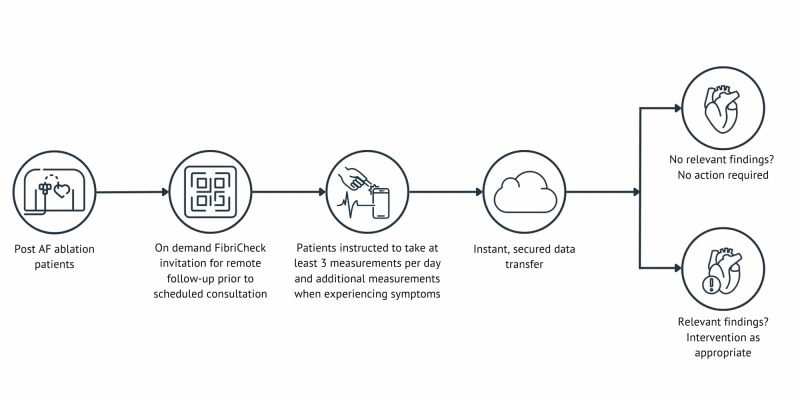
Addressing workforce shortages by saving time for healthcare professionals
The TeleCheck-AF project is a digital care pathway in collaboration with the MUMC+ hospital (The Netherlands), in which patients first monitor their heart rate/rhythm on demand, after which they can get a structured teleconsultation. The app-derived findings are integrated into a comprehensive AF management system. During this project, over 8.000 patients across more than 40 European centres were onboarded seamlessly and healthcare providers could easily access patient measurements through the FibriCheck infrastructure from day one.
When compared to a traditional approach, our digital pathway led to 71% fewer ECG examinations, 72% fewer Holter ECG examinations, 75% shorter consultation times and 75% less travel time expenditure, all while enhancing patient safety and satisfaction, with no significant difference in emergency department presentations, thereby demonstrating that FibriCheck can be integrated seamlessly into existing workflows, which saves time, resources, and relieves pressure on workforces.
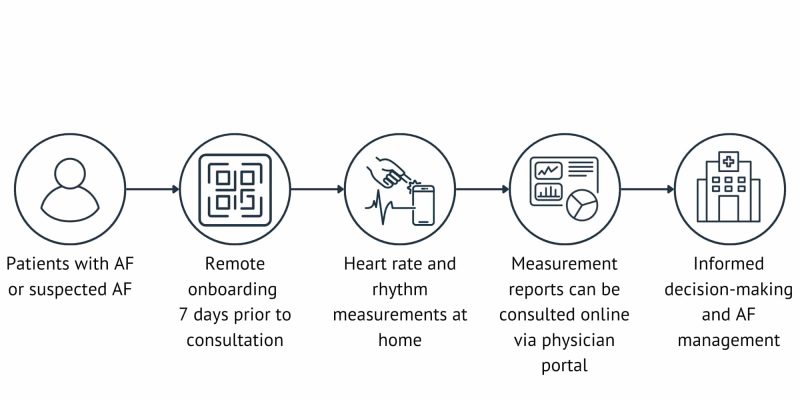
Reducing hospital wait lists to provide patients with timely healthcare interventions
Currently, wait lists at cardiology departments are often long, as traditional atrial fibrillation pathways using ECG are time-consuming and require costly hardware which isn’t always readily available. Due to the long wait to get to a diagnosis, patients can be at risk of severe consequences caused by their heart condition. FibriCheck can offer a solution to this issue, as we enable patients to use their smartphone to follow up on various vital parameters such as heart rhythm, heart rate, blood pressure and weight without the need for costly additional hardware or in-person appointments. The results of the measurements can easily be shared with physicians, who can see the measurement results in the FibriCheck Portal. With FibriCheck, patient triaging can happen more efficiently, which reduces wait lists and creates more capacity for those that really need it, as only patients who need follow-up have to come in for an appointment.
Several of our projects demonstrate a significant impact on patient wait lists throughout the entire patient pathway:
At the Barking, Havering and Redbridge University Hospitals (UK), FibriCheck is deployed in a pathway that consists of an end-to-end solution for the detection, diagnosis and management of AF (atrial fibrillation) in at-risk patients. This project indicated that the yield of early AF detection with FibriCheck is 5 times that of regular detection pathways. After a diagnosis is made with ECG-confirmation, treatment initiation can start within 48-72 hours. With the help of FibriCheck technology, patients can be triaged efficiently, which results in less unnecessary visits to the hospital, and less need for hardware such as ECGs and Holter monitors. This leads to a more efficient use of capacity and optimisation of resource allocation, ultimately increasing the efficiency of the pathway and reducing wait lists.
Another example of efficient patient triaging with FibriCheck can be found in the Staffordshire and Stoke on Trent Integrated Care System (UK). By deploying our technology, GP practices can monitor and triage patients suffering from palpitations remotely without the need for physical visits or additional equipment. This approach reduced unnecessary appointments, which led to decreased wait times and more efficient use of hospital resources.
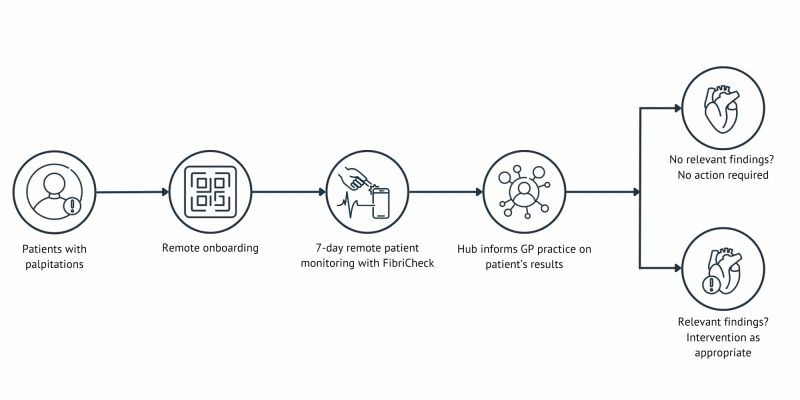
The TeleConvert AF study (The Netherlands) shows that FibriCheck can also have an impact on wait lists within a pre-intervention monitoring setup. Within this study, patients with presumed persistent AF that were scheduled for an electrical cardioversion procedure were monitored using FibriCheck. The goal of this pre-intervention monitoring was to decrease the number of unnecessary procedures by detecting cases of paroxysmal or self-terminating AF. Only those whose measurements demonstrated a case of persistent AF were advised to keep their scheduled appointment for electrical cardioversion, thereby reducing wait lists for cardioversions in general.
Efficient cross-condition management with FibriCheck
Atrial fibrillation (AF) significantly increases the risk of other cardiovascular diseases. Conversely, conditions like hypertension and obstructive sleep apnea can also contribute to the onset of AF. Given the interaction between these conditions, it’s crucial to integrate heart rhythm monitoring into routine care. The strong links which AF has to other conditions underscores the importance of a multidisciplinary approach and vigilant monitoring of various vital signs in patients with AF.
For patients with COPD, AF is also an important cross-condition which should be monitored by regularly checking the heart rhythm. Due to the current reduced capacity and long wait lists in the UK, some high-risk patients didn’t get ECGs for periods of years, which was a health risk. By implementing FibriCheck in primary care, new cases of AF could be detected and later on confirmed with use of ECG. This approach lead to a more effective use of hospital resources and better follow-up of at risk patients.
Another example of a cross-condition pathway can be found at the Wanstead and Woodford primary care network (UK), where flu clinic outreach was leveraged in order to identify and engage patients that were at risk for cardiovascular disease. With the help of FibriCheck, patients who needed their annual flu shot were also able to measure their heart rhythm remotely without any additional hardware. This enabled a combination of two pathways and improved detection rates of heart rhythm conditions while reducing waitlists and backlogs.
We are constantly working on new projects that increase the efficiency of clinical pathways, and that improve heart health care for patients. Subscribe to our newsletter and be the first to know about our latest developments.
Get our latest news and innovations delivered straight to your inbox
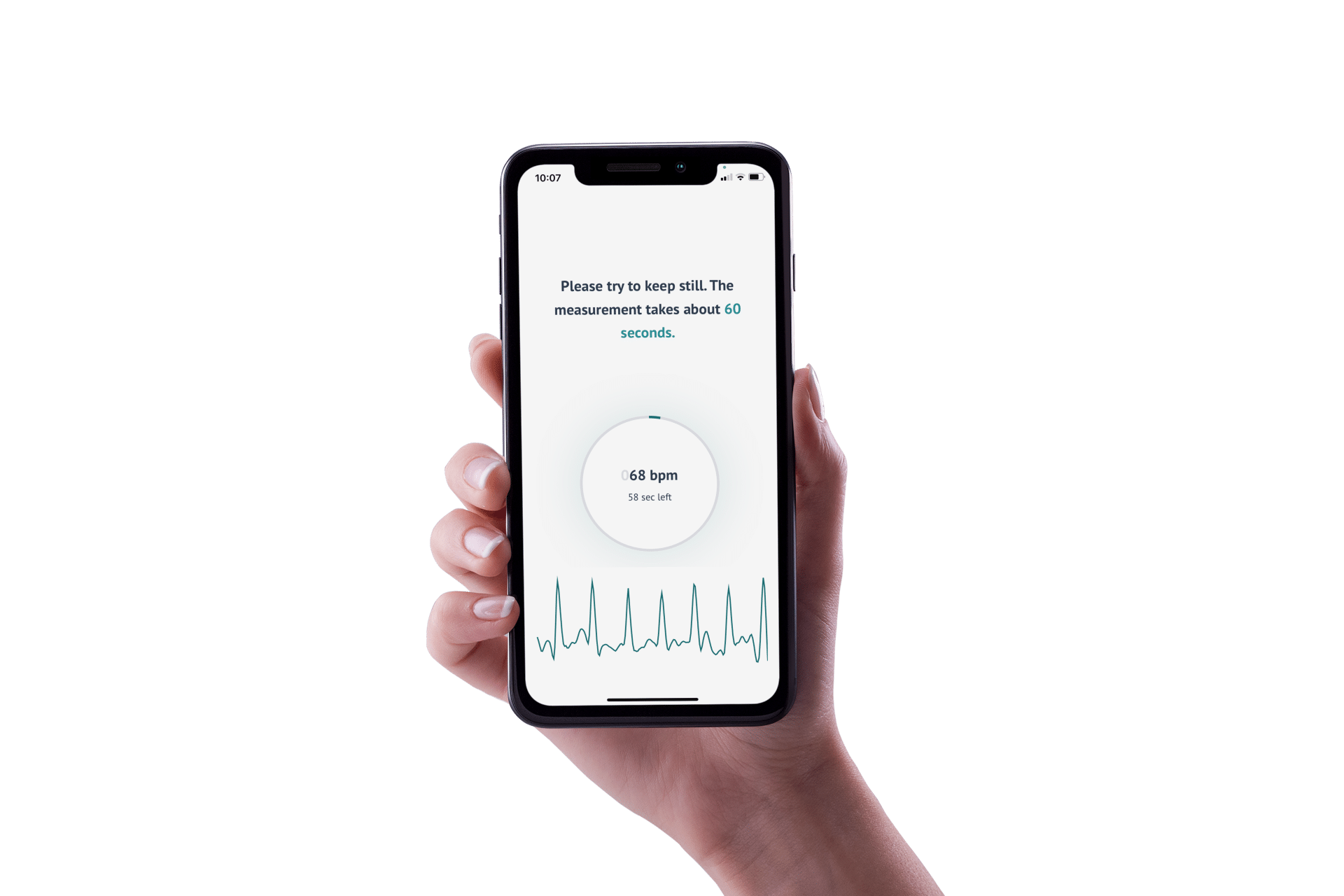
Created on July 3rd, 2024 at 02:23 pm
